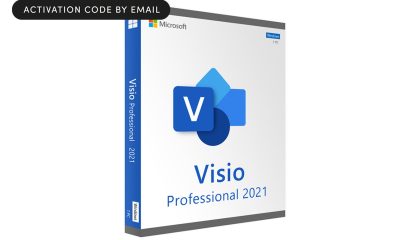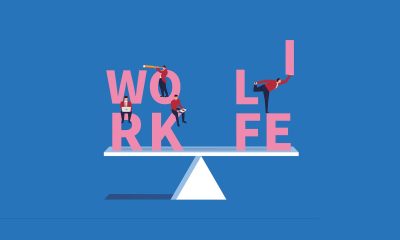Personal Finance
What Is Mortgage Insurance?

If you’ve ever tried to buy a home with a down payment lower than 20%, you might have heard about mortgage insurance. This financial tool — the primary objective of which is to protect the lender — allows people to buy a home without making a large down payment.
Here, we will explore the ins and outs of mortgage insurance, including what it is, how it works, the different types available, who needs mortgage insurance and how it affects your monthly payments.
Mortgage insurance explained
Mortgage insurance is a type of insurance that protects lenders if a borrower defaults on their mortgage loan. It is typically required for homebuyers who make a down payment of less than 20% of the home’s total price. There are several types of mortgage insurance offered by private and governmental entities.
When a borrower takes out a mortgage with less than 20% down, the lender may require the borrower to pay for mortgage insurance. The monthly cost of the insurance is typically a percentage of the loan amount, which is added to the borrower’s monthly mortgage payment. The insurance payment can vary depending on:
-
Type of loan
-
Size of the down payment
-
Creditworthiness of the borrower
Depending on the type of mortgage credit insurance, you may be able to cancel your mortgage insurance once you’ve built up enough equity in your home.
Why do you need mortgage insurance?
If you want to buy a property but don’t want to — or can’t — spend 20% on a down payment, then mortgage insurance is an excellent tool for you.
Lenders would be less likely to approve loans with smaller down payments without mortgage insurance. This might make it more difficult for you to buy a home. So, if you don’t have the cash to pay for a large down payment, you can still buy the home you want by paying a little more every month for your mortgage.
Is it required?
Not all lenders require mortgage insurance. Some lenders may have their own internal policies that allow borrowers to make a down payment of less than 20% without the need for mortgage insurance.
Some government-backed loan programs, such as FHA loans, require built-in mortgage insurance. Lenders will typically finance this into the loan.
What are the types of mortgage insurance?
There are several types of mortgage insurance, each with its unique characteristics and requirements. This section will discuss the four main types of mortgage insurance: private mortgage insurance (PMI), mortgage insurance premium (MIP), USDA guarantee fee and VA funding fee.
Private Mortgage Insurance (PMI)
Private financial institutions can require PMI for homebuyers who cannot make at least a 20% down payment. The cost of PMI is typically added to the monthly mortgage payment and can range from 0.3% to 1.5% of the original loan amount per year. The exact cost of PMI will depend on a variety of factors, including your credit score.
You can typically cancel your PMI once you’ve built up enough equity in your home. This typically happens when you’ve paid down your loan enough to reach a loan-to-value ratio of 78% or less.
You may also have the option to pay a one-time premium for mortgage insurance rather than pay monthly. This is known as LPMI (Lender-Paid Mortgage Insurance), and it’s a way to avoid paying the monthly PMI.
Mortgage Insurance Premium (MIP)
MIP is required for Federal Housing Administration (FHA) loans. These loans are government insured and are designed to help first-time homebuyers and those with lower incomes to buy a home.
MIP is typically more expensive than PMI. The cost of MIP is typically added to the monthly mortgage payment, and it can be significant depending on the loan amount and the down payment. Unlike PMI, which you can cancel when you reach a certain level of equity in the home, MIP is usually required for the life of the loan. This means that you will have to pay MIP until you pay off the loan or refinance to a different type of loan.
If you’re considering refinancing, read our guide on the best mortgage refinance options, and make sure you follow a mortgage refinance steps checklist.
Besides the monthly mortgage payments, you will have to pay an upfront MIP at the time of closing. This one-time payment is typically 1.75% of the loan amount.
USDA Guarantee Fee
The U.S. Department of Agriculture (USDA) guarantee fee is required for homebuyers who are looking to buy a home in a rural area with a USDA loan. This type of loan is backed by the USDA and is designed to help low- and moderate-income homebuyers in rural areas. The government offers USDA loans with more credit and income requirements than conventional ones.
The USDA guarantee fee is also added to the loan amount, ranging from 0.35% to 2.75%. Lenders may be able to offer low-income borrowers a lower guarantee fee. But higher-income borrowers may still have to pay a higher fee.
Lenders use this fee to offset the costs associated with supplying the loan and to ensure the long-term sustainability of the USDA loan program. The fee is typically paid upfront at the time of closing, but it can be financed with the loan.
VA Funding Fee
The VA funding fee is required for homebuyers looking to buy a home with a loan backed by the Department of Veterans Affairs (VA). This type of mortgage insurance is available to veterans, active-duty service members and spouses of service members — active or veterans. VA loans are offered by the government and have fewer credit and income requirements than conventional loans. They also do not require a down payment, making them a more affordable option for veterans and service members.
The VA funding fee is added to the monthly loan payments and can range from 1.4% to 3.6% of the loan amount.
The advantages of mortgage insurance
It may seem like an added expense, but mortgage insurance has several advantages if you’re trying to buy a home.
Low down payment: The biggest advantage of mortgage insurance is that it allows you to buy a home with a low down payment. For conventional loans, a down payment of 20% is typically required. Considering the current real estate market, this down payment can be quite significant. But with mortgage insurance, you could put as little as 3% down and still get the home you want.
Cancellation: You may be able to cancel most types of mortgage insurance once you’ve built up enough equity. This can add up to significant savings for you over the life of the loan.
Protection for lenders: Mortgage insurance protects lenders and allows them to continue offering loans. Loan defaults happen, but this insurance allows lenders to maintain enough backing to continue to offer loans to you and other buyers.
The cons of mortgage insurance
Like any financial product, mortgage insurance also has its drawbacks. This section will discuss some of the cons of mortgage insurance.
Additional cost: The main disadvantage of mortgage insurance is the cost. The cost of mortgage insurance is typically added to the monthly mortgage payment and can range from 0.3% to 1.5% of the original loan amount per year. For some people, this added cost can be a significant burden in the long run. Make sure you weigh the pros and cons and decide if you prefer paying for a typical down payment or if it’s better to pay a few extra hundred dollars every month.
Not all types of mortgage insurance can be canceled: If you are considering canceling your mortgage insurance, know that some types of mortgage insurance, such as FHA mortgage insurance, may require the borrower to carry the insurance for the entire loan term regardless of their equity.
How much can you expect to pay?
The cost of mortgage insurance can vary depending on several factors: the type of loan, the size of the down payment and the borrower’s credit score. You can expect a small percentage of the total loan amount to be added to your monthly payments. Below are the expected costs for different types of mortgage insurance.
The cost of private mortgage insurance can vary, but it is typically between 0.3% and 1.5% of the original loan amount per year.
On the other hand, the cost of MIP is typically between 0.5% to as much as 5% of the original loan amount per year. There is also a one-time fee at closing of around 1.75% of the loan amount.
For government-backed loans, the USDA guarantee fee is around 0.35% to 2.75%, and the VA funding fee is around 1.4% to 3.6%.
Not all mortgage insurances are permanent. Once you’ve reached a certain level of equity, you can ask that the mortgage insurance be removed. If your loan offers this feature, it can make buying a home more affordable than loans that don’t. If you’re interested in this feature, research traditional loans with PMI.
Your next steps
If you’re looking to purchase a home without committing to a large down payment, you need to know how to handle mortgage insurance efficiently. Here are the next steps you should take.
-
Understand the types of loans and mortgage insurance: Know the differences between the types of insurance described in this guide to know which is best for you. Research different loans offered by both private institutions and the government to find one that suits your needs best. Finally, consider whether you need a traditional mortgage or a reverse mortgage. If you’re considering a reverse mortgage, review our guide to the best reverse mortgage providers.
-
Review your credit score: Before you can apply for a loan with a low down payment, you’ll need to review your credit score. If possible, try to improve your credit score as much as possible before applying for a home mortgage.
-
Decide on a lender: Not all lenders offer the same mortgage insurance rates and terms. Compare rates and terms from different lenders to find the best mortgage lender for you.
-
Understand the terms and conditions: Read and understand the terms and conditions of your mortgage insurance policy. This will help you understand when and how you can cancel your insurance and what the penalties are for canceling early.
-
Budget accordingly: Factor the cost of mortgage insurance into your monthly budget. This will help you understand what you can afford and ensure that you are not overstretching your finances.
-
Keep an eye on your equity: If you’re planning to cancel your mortgage insurance, keep an eye on your equity. As soon as you have enough equity in your home, you may be able to cancel your insurance and save money on your monthly mortgage payment.
With these things in mind, you’re ready to find the best mortgage loan — with the best interest rate — to buy your new home.
© Copyright 2023 Money Group, LLC. All Rights Reserved.
This article originally appeared on Money.com and may contain affiliate links for which Money receives compensation. Opinions expressed in this article are the author’s alone, not those of a third-party entity, and have not been reviewed, approved, or otherwise endorsed. Offers may be subject to change without notice. For more information, read Money’s full disclaimer.
Read the full article here

-

 Passive Income6 days ago
Passive Income6 days agoThe One Microsoft Design Tool Business Owners Shouldn’t Miss
-

 Side Hustles4 days ago
Side Hustles4 days agoThe DOJ Reportedly Wants Google to Sell Its Chrome Browser
-

 Investing5 days ago
Investing5 days agoThis Founder Turned a Hangover Cure into Millions
-

 Side Hustles4 days ago
Side Hustles4 days agoHow to Create a Unique Value Proposition (With Tips & Examples)
-

 Investing6 days ago
Investing6 days agoYour Firsthand Experiences Shape the Way You Run Your Business — Here’s How Mine Shaped Me
-

 Investing3 days ago
Investing3 days agoAre You Missing These Hidden Warning Signs When Hiring?
-

 Investing4 days ago
Investing4 days agoBarbara Corcoran, Lori Greiner Differ on ‘Quiet Vacationing’
-

 Passive Income4 days ago
Passive Income4 days agoHow AI Can (and Should) Drive Innovation Across Your Entire Company


















